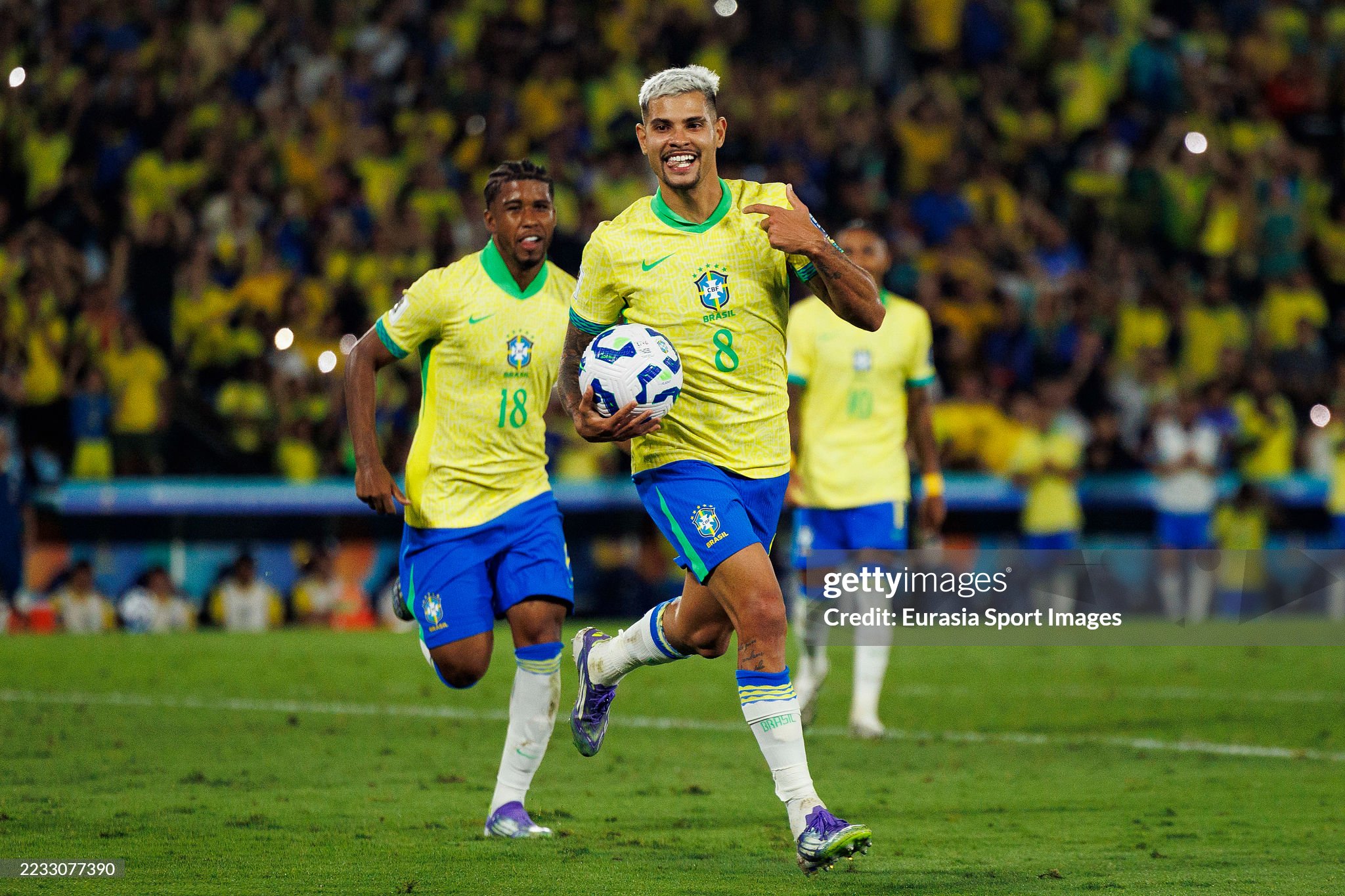Brazil beat Chile 3-0 at the Maracanã with goals from Estêvão, Lucas Paquetá and Bruno Guimarães, climbing to second place in the South American qualifiers with 28 points. Already qualified for the 2026 World Cup, Carlo Ancelotti’s men showed depth and maturity, while Chile’s defeat confirmed their bottom-place finish and elimination from contention.
Brazil’s 3-0 win over Chile at the Maracanã was more than just another victory it was a reminder of the Seleção’s depth, firepower and resilience as the South American qualifiers for the 2026 World Cup near their conclusion.
With goals from Estêvão, Lucas Paquetá and Bruno Guimarães, Brazil climbed to second place in the standings with 28 points, further consolidating their status as one of the heavyweights of the continent, even if the path to this point has not always been smooth.
The match had its own nuances. Chile, under interim coach Nicolás Córdova, entered the game already knowing their hopes of qualifying were mathematically over. This gave the coach freedom to experiment with younger players, offering them experience against one of the world’s strongest sides. Despite this inexperience, Chile showed determination early on, pressing Brazil and making it clear they had no intention of simply rolling over at the Maracanã. For much of the first half, they were able to frustrate Carlo Ancelotti’s men, forcing Brazil to remain patient in search of a breakthrough.
The opener came in the 38th minute, courtesy of Estêvão, the 18-year-old forward who has already become a sensation since his move to Chelsea. His goal was a reminder of Brazil’s production line of talent, with another teenager stepping onto the biggest stage and delivering when it mattered most. Estêvão’s strike calmed any nerves and allowed Brazil to dictate the game with greater composure.
Even so, despite fielding a highly attacking line-up that included Raphinha, Gabriel Martinelli, Estêvão and João Pedro, Brazil struggled to fully impose themselves. Ancelotti introduced even more attacking firepower in the second half Richarlison, Luiz Henrique and Kaio Jorge but Chile’s defensive organization kept the contest alive until the final quarter of an hour. That resilience was finally broken by two quickfire goals that highlighted Brazil’s midfield dominance.
First, Lucas Paquetá, West Ham’s creative lynchpin, struck in the 72nd minute with his trademark composure, finishing off a move that showcased Brazil’s ability to combine patience with incisiveness. Just four minutes later, Newcastle star Bruno Guimarães added the third, his goal effectively sealing the contest and sending the Maracanã crowd into celebration. Those two strikes reflected Brazil’s multi-dimensional threat: even when the forwards fail to convert, the midfielders are more than capable of stepping up.
For Ancelotti, who will lead Brazil into the 2026 World Cup in the United States, Canada and Mexico, the result was another step in consolidating his vision. Having already secured qualification, Brazil used this match to fine-tune their rhythm, give opportunities to emerging stars like Estêvão, and test different attacking combinations. The balance between youth and experience is key, and this match provided evidence that Brazil have both in abundance.
In the wider context of the qualifiers, the win took Brazil to second place on 28 points, but it also highlighted the gap that remains between them and Argentina. Lionel Scaloni’s team, sitting comfortably at the top with 38 points, have been the standard-bearers of South American football. Brazil’s poor start to the campaign left them chasing, and although they have now recovered, they will enter the World Cup as contenders rather than outright favorites. That said, the tournament is still two years away, and with Ancelotti at the helm, Brazil will believe they can peak at the right time.
The final challenge of the qualification cycle comes on Tuesday against Bolivia in El Alto. Playing at 4,150 meters of altitude is notoriously difficult, even for South America’s strongest sides. Managing player fitness and tactical adjustments will be crucial, as the thin air can drastically alter the pace and intensity of the game. Brazil, however, will approach it with less pressure, having already secured their ticket to the World Cup. For younger players like Estêvão, it will be another valuable test in a unique environment.
For Chile, meanwhile, the story is far less positive. Their 3-0 defeat in Rio de Janeiro was emblematic of a campaign that has been defined by missed opportunities and a lack of cutting edge. With just 10 points from 51 possible, they sit at the bottom of the table, already eliminated from contention for the 2026 World Cup. For a country that once boasted golden generations featuring Arturo Vidal, Alexis Sánchez and Claudio Bravo, this marks a sobering reality. The decision to field younger players against Brazil was a sign that Chile are already looking to rebuild for the future, though it will take time before they can realistically challenge again on the international stage.
The contrast between the two nations could not be sharper. While Brazil celebrated another step forward, showing that their depth of talent and tactical versatility make them a force to be reckoned with, Chile’s loss confirmed the depth of their decline, reinforcing the urgent need for renewal.







